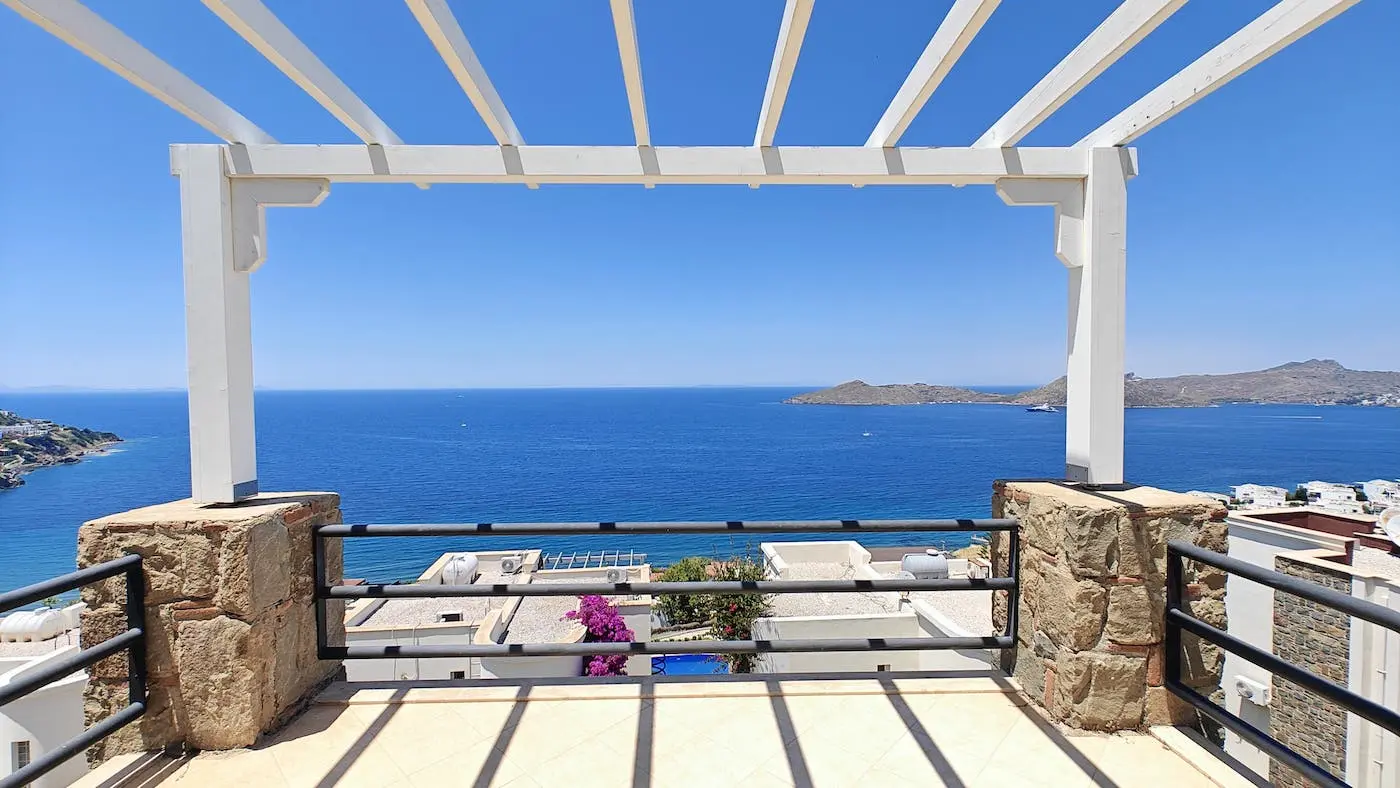Standing the test of time, Eyup in Istanbul city earns fame as a conservative district, home to Islamic buildings with a strong Ottoman heritage. Popular with Islamic tourists, the area has gained notoriety in recent years as an ideal place to buy a home if you want a family-friendly, conservative neighbourhood with low-key nightlife. The location in European Istanbul, next to the Balat neighbourhood, sits far away from mainstream tourist sites like the Blue Mosque complex and Hagia Sophia, hence it doesn't suffer the trappings of mainstream tourism. Yet the rich heritage adds another twist to the already varied history of this great city.

Guide to Eyup in Istanbul
Brief History Through Time
Settled initially during Byzantine times and known as Kosmidion, the area gained prominence due to the local monastery, Anargyroi. Following the fall of Constantinople, the area was renamed Abu Ayyub al-Ansari, after a companion of Muhammad. Fast-forward nearly 300 years to the 18th century, and large factories near the Golden Horn began to mar the landscape. The area was losing its charm. However, business thrived as many factories made fezzes, an Ottoman hat worn by most men.
By the time of the Turkish War of Independence, when fezzes fell out of fashion, Eyup saw the importance of maintaining the Islamic connection, and in later years, the Renaissance brightened the streets and neighbourhoods. The sheer wealth of cultural treasures within 29 neighbourhoods makes it a highly prominent area for Turkish and foreign Muslims. But to truly understand the history, you need to know about the man behind the stories.
Who Was Abu Ayyub al-Ansari?
He was a prominent companion of the Prophet Muhammad in early Islamic history. His full name was Khalid ibn Zayd ibn Kulayb al-Ansari, and he belonged to the Banu Najjar, a clan of the Khazraj tribe in Medina. Ancient texts refer to him as one of the Ansar, the "Helpers" of Medina who welcomed and supported the Prophet and the Muhajirun (Emigrants from Mecca).
When Prophet Muhammad emigrated to Medina during the Hijrah, he hosted the Prophet in his home for about 7 months until the Prophet’s quarters were built. He was deeply devoted and showed extreme humility in hosting him, insisting that the Prophet take the upper floor of the house, which the Prophet initially declined.
He fought in many early Islamic battles, including Badr and Uhud, and remained active in military campaigns even into old age. Dying around 674 CE (approx. 52 AH), during the first Arab siege of Constantinople, under the Umayyad Caliph Mu'awiyah I, according to tradition, he requested to be buried as close as possible to the city walls of Constantinople. Hence, when Sultan Mehmed II conquered Constantinople, they immediately revered the tomb, building the Eyup Sultan mosque to honour his legacy and devotion to Muhammad.

Top Landmarks and Places of Interest
19th-century Eyüp Mosque
Eyüp Sultan Mosque is the third holiest site in Islam after Mecca and Medina. This commemorative place of worship, whose exterior and prayer hall display early Ottoman architecture, is influenced by Baroque style and later Ottoman Baroque refinements. Attracting millions of visitors annually, especially during Ramadan, the classic Ottoman architectural style, with a large central dome is flanked by smaller domes and semi-domes. The interior, adorned with intricate tilework, calligraphy, and stained glass windows, also reflects a rich artistic heritage.
The spacious courtyard includes a fountain for ablutions and is surrounded by a colonnade, providing a serene environment for worshippers. Nearby, Eyüp Sultan Square, a lively area with cafes, shops, and cultural events, attracts both locals and tourists. Next to the mosque, the Cultural Centre Command features a fitness centre, cultural space, and areas for interactive experiences, including Islamic calligraphy and traditional crafts.

Abu Ayyub Al-Ansar's tomb
At the heart lies the Ayyub al-Ansar tomb, dedicated to the patron saint of the city. Located within the mosque complex, the tomb holds immense spiritual, historical, and cultural significance. Featuring Ottoman-Islamic architecture, with elaborate calligraphy, tile work, and a gilded grille enclosing the actual burial place, many visitors recite the Qur’an, offer du‘a (supplication), or sit quietly in reflection, and leave prayers and wishes written on paper, although this practice is more cultural than religious.
Eyüp is a key location not just for tourists, but also for pilgrims from places like Saudi Arabia, drawn by the connection to shrines and the concept of saints. The al-Ansari shrine is central to this spiritual tourism. Local vendors sell prayer beads, religious books, and traditional attire, supporting traditional businesses and artisans, while visitors explore the tomb chamber, ablutions fountain, and surrounding charitable buildings. This includes schools, soup kitchens, and an exhibition centre that documents the site's legacy, of religious, social, and urban cohesion.
19th-century French Pierre Loti Tepesi
Families love this ample green space, an excellent place for relaxation and reflection, which is named after a French officer. You may wonder how the connection came about, but there is a simple story. Pierre Loti (pen name of Louis Marie-Julien Viaud, 1850–1923) was a French naval officer and writer who romanticised the East and Istanbul in his literary works. He adopted the name "Pierre Loti" after befriending a Turkish fisherman during his travels.
His novel Aziyadé, a semi-autobiographical account of his love affair with a Turkish woman, Aziyadé features vivid descriptions of Ottoman culture and the harem system. During his time here, Loti lived in Eyup and immersed himself in Turkish culture and language. Situated atop Pierre Loti Hill, this café offers panoramic views of the Golden Horn, and Loti frequented this spot to write and reflect. Hence the name.

Relaxing Cable Car Rides
For incredible panoramic views up to the cafe, this cable car is a must. First opening in 2005, and spanning 420 metres, the 3-minute ride accommodates up to 4,000 passengers daily. This serene escape contrasts with the bustling city centre district, giving travellers ample time to reflect or enjoy Turkish tea at the famous café.
Eyüp Cemetery
The Cemetery (Mezarlığı) is a significant and historic burial ground adjacent to the mosque. It holds profound spiritual, cultural, and historical importance in Turkey. The cemetery, dating from Ottoman times, became the traditional burial site for high-ranking officials, military leaders, and scholars, reflecting the empire's reverence for this sacred area.
Is Eyup a Good Place to Live?
For family-friendly, conservative neighbourhoods with strong Islamic values, Eyup is an excellent place to live. Some areas have golden horns and views of the Black Sea. The transportation network, as well as shopping facilities, is fantastic, and public hospitals cater to all medical needs, while private establishments offer faster service. Apartments are the most common form of housing, and prices vary across the region depending on the location. However, overall, Eyup is a more affordable district compared to places like nearby Besiktas. The area covers 228 square kilometres, and there are 29 neighbourhoods, so house buyers have a wide range of choices.

Use Our Services
Browse Homes in Eyup: From affordable apartments to luxurious penthouses, our portfolio features an impressive range of budget-friendly and prestigious homes. Each listing provides all the information prospective home buyers would want to know, including price, location, and home features. Use the contact details to find out more via email or arrange viewings.
Speak to an Agent: Alternatively, if you are considering investing and would like to learn more about Eyup in Istanbul, please get in touch with our agents today. With impeccable local knowledge of all districts, as well as years of experience, they are your first step to becoming a proud homeowner in Istanbul.












 Istanbul
Istanbul  2
2  2
2 


















 X
X